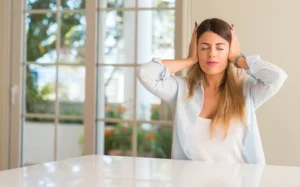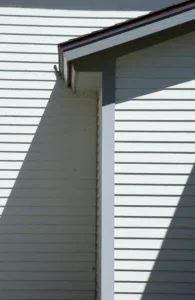Is replacing your siding the next item on your home improvement to-do list? If you are wanting to increase the efficiency of your home, enhance curb appeal or add value to your home, siding is an excellent home improvement project that will achieve all these reasons. While siding does play an important role in providing your home with a unique character and charm, its main purpose is to protect the interior structure of your home from the elements. Siding protects your home from the rain, humidity and moisture, high and low temperatures, insects and pests. That is why having siding that is in tip-top condition is important for your home.
Now, here is where the challenge begins. You know siding is important, but it comes in many different materials, with each material having its own advantages and disadvantages. So, how do you find the right siding for your home? A common consideration for homeowners is the cost of siding, so in this article, we will be looking at the different types of siding, revealing the most economical siding.
The Different Types of Siding Available
Before we get into the most economical siding, let us take a look at the most common types of siding available. Siding comes in a variety of different colors and styles, so it can be difficult to know which is the right type for your home. Below are the most common types of siding used in residential homes, as well as their advantages and disadvantages.
Vinyl Siding
Vinyl siding is the most popular siding choice in the United States. It is highly durable, comes in a variety of colors and it is quite cost-effective.
Advantages of vinyl siding: Durable and typically includes a 25+ year warranty; plenty of color options; versatile in textural options; easy to clean.
Disadvantages of vinyl siding: Not waterproof (only water-resistant); can sometimes warp under extreme weather conditions; you cannot repaint it.
Cost: While vinyl siding costs do vary, on average you can expect to pay between $2-5 per square foot installed.
Fiber Cement Siding
Fiber cement siding is another popular siding choice. It is made from a mixture of wood, sand and cement. It is created to look and feel like natural wood siding, but with additional benefits.
Advantages of fiber cement siding:Looks and feels like wood without the maintenance costs; has a class 1A fire rating; not prone to rot or decay; versatile in finish and texture
Disadvantages of fiber cement siding: more expensive than vinyl; must be repainted every 12-15 years; color does not go all the way through fiber cement siding, so chips and scratches require touch-ups.
Cost: Fiber cement siding products are a lot more expensive than vinyl siding products. The total installation cost for cement siding ranges from $4.50 to $9 per square foot.
Brick Siding
Brick siding is a great siding choice because it lasts almost eternally. There are many houses and buildings that are over 100 years old built with brick siding, which are still in prime condition.
Advantages of brick siding: Can last over 100 years with little maintenance; fire resistant; no need for repainting; termite-proof and extremely durable.
Disadvantages of brick siding: It is one of the most expensive siding options available; if you paint the brick, it is almost impossible to return to the natural brick finish; over long periods of time, mortar joints may deteriorate and need replacing.
Cost: Installing brick siding costs an average of $15 per square foot. The average cost to completely install brick siding on a house ranges between $9 and $28 per square foot for materials and labor.
Wood Siding
Wood siding offers a timeless and very natural look, and is a very elegant choice. Wood siding comes in a wide variety of wood species such as: pine, fir, cedar, and redwood. However, it is prone to some problems, like termites and potential rot.
Advantages of wood siding: Lightweight and easy to install; eco-friendly; can be stained and painted in custom colors; has a high R-Value and is highly energy efficient.
Disadvantages of wood siding: Color needs to be consistently maintained; can be easily damaged by insects or water; often costly to maintain; not fire resistant, so not ideal for dry climate areas.
Cost: Wood siding made from spruce and pine generally cost $2.75 to $3.75 per square foot for materials, while premium wood species like redwood and cedar range between $5 and $7.50.
So, Which Siding Is the Most Economical?
Vinyl siding is on average the most economical siding, and it is also one of the most popular siding materials. Known for its ability to withstand the harsh elements, it can mimic the look of many types of cladding, including stone, wood and slate, for a much cheaper price. Vinyl siding is also a great choice if you want to increase the energy efficiency of your home as it can be paired with insulated siding, which adds another layer of insulation to your home.
{{cta(‘c2473634-2347-48b2-a01d-b65b501f4383’)}}



